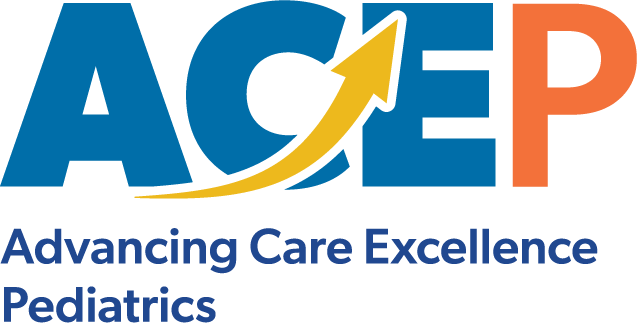Oral Health in Children: The Role of the Nurse in Community Settings
Oral health has been largely forgotten since 2000, when the Surgeon General’s report, Oral Health in America, declared early childhood caries a silent epidemic, four times more common than asthma and the most common chronic disease of childhood. Although the Surgeon General called for pediatric preventive oral health practices to be integrated into well-child care, evidence from national databases reveals that the incidence and prevalence of dental caries continue to be high, especially in lower socioeconomic and minority group populations.
The CDC 2024 Oral Health Surveillance Report provides national estimates for selected oral health measures from the National Health and Nutrition Examination Survey (NHANES). Findings in the CDC report revealed that more than 1 in 10 children aged 2–5 years had at least one untreated cavity in their baby teeth, and over 50% of children aged 6–9 have experienced cavities in primary or permanent teeth. The prevalence among children from high poverty families (24.6%) was more than double the prevalence among low poverty families (11.6%). The report further reveals that Mexican American children had a higher prevalence of untreated tooth decay (18.5%) than non-Hispanic White children (8.1%). Data continue to reveal significant disparities in oral health status access to care for children across the US. Poor oral health in childhood can lead to pain, infections and eating/speech issues, cause missed school and parent workdays, and have long-term impacts on oral and overall health.
This teaching strategy focuses on developing oral health competencies to educate parents and children on the importance of oral health and hygiene, fluoride, and having a dental home. It also focuses on recognizing abnormal findings in the mouth.
Oral Health in Children: The Role of the Nurse in Community Settings
Download All Files for This Teaching Strategy
Learning Objectives
Students will:
- Describe the importance of oral health in the child
- Describe the development of early childhood caries
- Demonstrate oral hygiene tips for child
- Describe the importance of fluoride for dental health
- Describe the role of the nurse when providing oral health care to children in the community
Learner Prework
Read
- National Institutes of Health, December 2021 – Oral Health in America: Advances and Challenges Executive Summary
Complete
Students should download the following for clinical use:
Suggested Learning Activities
Early Childhood Caries Education in a Preschool Setting
Students will integrate oral health into their preschool clinical experience.
(Materials: colored pencils, crayons, paper, mirror, toothbrushes, toothpaste)
Oral Health Education for Preschool Child
In a classroom setting, students can deliver education to a select group of children. Approach the assignment using the following suggestions:
1. Help children describe why their teeth are important.
- Children will look at their teeth in a mirror and draw a picture of their own teeth.
- Students will ask children to describe what their teeth do (help them eat, talk, smile).
2. Teach children how to keep their teeth clean.
- Student will demonstrate tooth brushing with large brush and tooth model.
- 2 minutes 2x/day
- Use fluoride toothpaste
- Children will practice tooth brushing with their own toothbrush and toothpaste.
Oral Health Education for Preschool Staff
Students can provide staff professional development in the following ways:
- Describe the causes of early childhood caries (ECC).
- Emphasize how the combination of bacteria, sugar, acid, and frequency of eating contribute to development of ECC.
- Discuss ways that staff can help prevent development of ECC:
- Healthy snacks
- Drink water instead of sugary drinks
- Tooth brushing time
Oral Health Education for Parents
Students can provide education for parents. Select one topic for an oral health information column in the preschool newsletter for parents:
- Importance of fluoride and available sources. Discuss the different types of fluoride and the benefits/risks of each:
- Topical fluoride – toothpaste – fluoride varnish
- Silver diamine fluoride
- Systemic fluoride – community water, dietary supplement
- Definition of a dental home and identification of resources available in the preschool community with reasons for having a dental home.
- Identify possible dental homes in specific zip code for patients with Medicaid.
- Causes of early childhood caries. Describe how the combination of bacteria, sugar, acid, and frequency of eating contribute to development of ECC.
- How to prevent development of ECC. Discuss how good nutrition combined with keeping a child’s mouth clean can prevent ECC.
- Students will describe healthy snacks.
- Students will describe proper tooth brushing.
Suggested Reading
- The following article describes transitioning the traditional HEENT exam to the HEENOT exam to include the oral cavity: Haber, J., Hartnett, E., Allen, K., Hallas, D., Dorsen, C., Lange-Kessler, J., . . .Wholihan, D. (2015). Putting the mouth back in the head: HEENT to HEENOT. American Journal of Public Health, 105(3), 437-441. Retrieved from https://ajph.aphapublications.org/doi/full/10.2105/AJPH.2014.302495
- Become familiar with Smiles for Life, an Interprofessional Oral Health Curriculum consisting of eight 45-minute courses that contain the core components of oral health throughout the lifespan. The Smiles for Life curriculum format can be easily implemented in an academic setting. Included is a comprehensive set of educational objectives based on the Accreditation Council for Graduate Medical Education (ACGME) competencies, test questions, resources for further learning, oral health web links, an implementation guide, and detailed module outlines. CE credit is available for each module upon completion. Choose “Teach Curriculum” Course 2 – Child Oral Health. Each course has downloadable slides and speaker notes for class presentation. The slides can be arranged as you wish using the SFL slide sorter on the right side of the page. Retrieved from www.smilesforlifeoralhealth.org
- Become familiar with Cavity Free Kids (http://cavityfreekids.org), an oral health education program that contains many oral health learning activities designed for use in the community for pregnant women and young children. See Cavity free kids: Oral health education for pregnant women and children birth through age five and their families (Arcora Foundation, 2015)
- Bright Smiles, Bright Futures (BSBF): https://www.colgatepalmolive.com/en-us/community-impact/bright-smiles-bright-futures
- Championing Minimally Invasive Care: Aligning Advocacy to Transform Oral Health: https://www.astdd.org/docs/minimally-invasive-care-advocacy.pdf
- Sigma Oral Health Equity Resources: https://www.sigmanursing.org/learn-grow/education/oral-health-equity
- US Preventive Services Task Force. (2021). Screening and Interventions to Prevent Dental Caries in Children Younger Than 5 Years. Retrieved from https://www.uspreventiveservicestaskforce.org/uspstf/recommendation/prevention-of-dental-caries-in-children-younger-than-age-5-years-screening-and-interventions1#fullrecommendationstart


